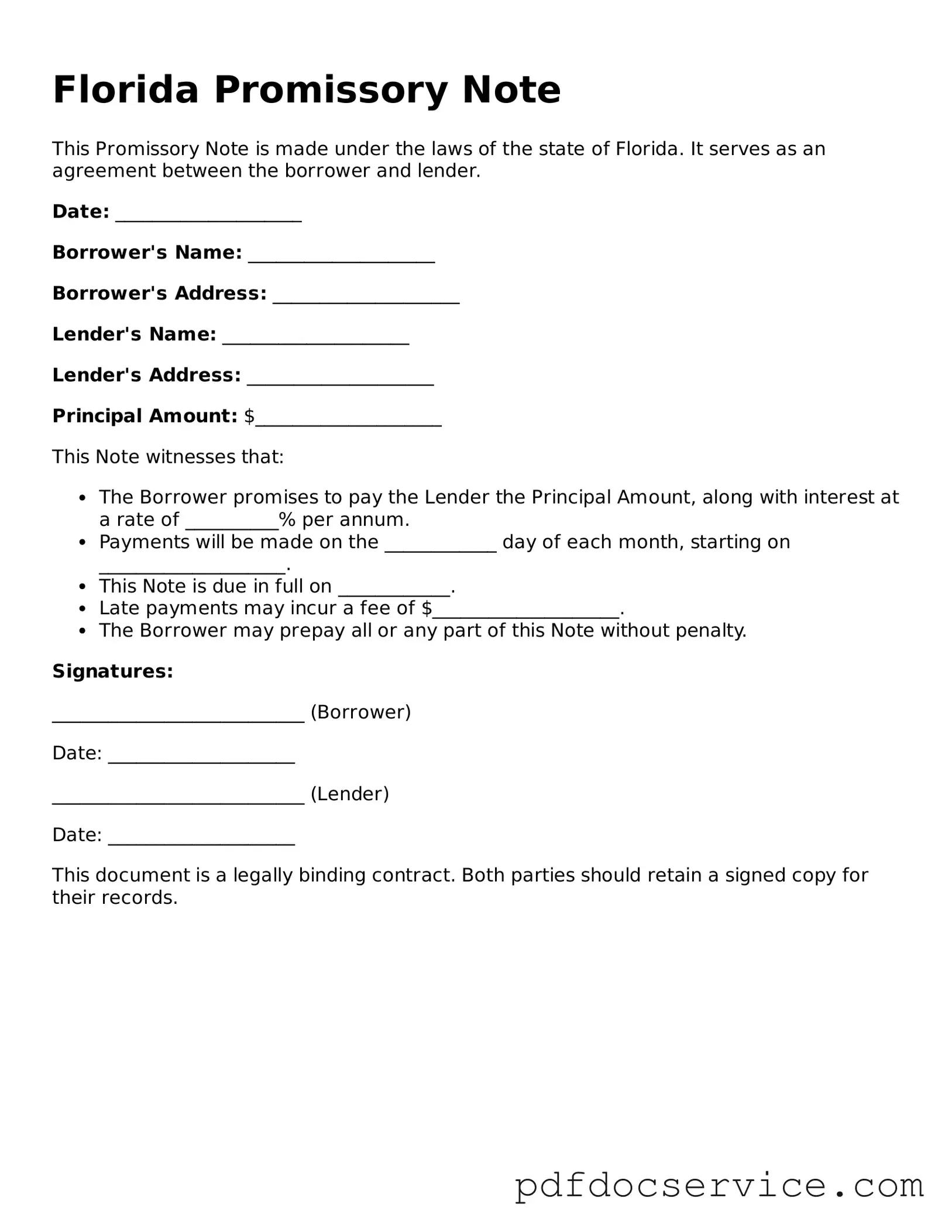Printable Promissory Note Template for Florida
A Florida Promissory Note is a written promise to pay a specified amount of money to a designated party at a defined time. This legal document outlines the terms of the loan, including interest rates and payment schedules. Understanding its components is essential for both lenders and borrowers to ensure clear expectations and obligations.
Open Promissory Note Editor
